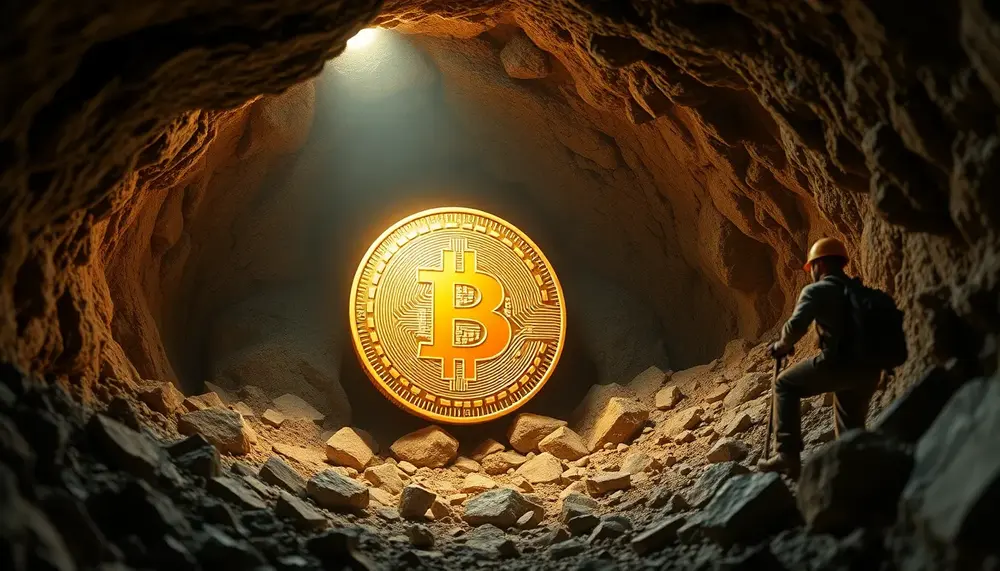Decentralized
Decentralized
Understanding the Concept of 'Decentralized' in Bitcoin Mining
For someone new to the field of digital currencies, or 'cryptocurrencies', understanding all the jargon can be a bit tricky. One of the more common terms you'll likely hear is 'decentralized'. If you're wondering about what 'decentralized' means in the context of Bitcoin Mining, you're in the right place!
What Does 'Decentralized' Mean?
In its simplest form, 'decentralized' refers to something that doesn't have a central point of control. In other words, it's not controlled by a single, central authority. Instead, power and control are spread out among many different participants or nodes. This feature adds to the security and reliability of a system.
"Decentralized" Relation with Bitcoin Mining
Now, when we talk about Bitcoin Mining, the term 'decentralized' is extremely relevant. Bitcoin Mining is 'decentralized' by design. This is a defying feature of cryptocurrencies such as Bitcoin that sets it apart from traditional, 'centralized' currencies and banking systems.
In a 'centralized' system, like a traditional bank, all transactions go through a central authority (the bank). The bank holds all the control and confirms these transactions. In contrast, Bitcoin Mining is 'decentralized'. There's no central authority. Instead, multiple individual miners verify transactions. They form a vast, worldwide network, with no single point of failure.
Benefit of 'Decentralized' Bitcoin Mining
The benefit of this setup is that it's extremely hard to cheat or tamper with. If someone tries to trick the system and create a fake transaction, they would need control over the majority of all Bitcoin miners. Given the 'decentralized' nature of the network – with miners spread out all over the globe – this is virtually impossible. That's the power of 'decentralized' Bitcoin Mining.
Final Thoughts on 'Decentralized' Mining
In essence, 'decentralized' Bitcoin Mining ensures security, transparency, and trustworthiness. It is an inherent feature of blockchain technology, which is at the core of cryptocurrencies like Bitcoin. Understanding and appreciating this 'decentralized' nature is essential to grasp the transformative potential of Bitcoin and other cryptocurrencies.
Blog Posts with the term: Decentralized

This guide simplifies Monero solo mining with XMRig, covering setup and optimization to mine efficiently. It explains the benefits of using XMRig, necessary hardware requirements, and how to set up a Monero wallet for secure fund management....

Cloud mining allows individuals to lease processing power from remote data centers for cryptocurrency mining, offering convenience and lower upfront costs but potentially reduced earnings and risks of scams. Hardware mining involves owning equipment with greater control and profit potential...

Mining USDT in Trust Wallet is a straightforward process that involves setting up the wallet, funding it with USDT, and connecting to a reputable mining pool. Trust Wallet's user-friendly interface, robust security features, and wide compatibility make it an excellent...

USDT (Tether) is a stablecoin pegged to the US Dollar, offering stability and liquidity in the cryptocurrency market. Unlike traditional cryptocurrencies that are mined, USDT can be earned through methods like liquidity mining, staking, and cloud mining; setting up involves...

Choosing between mining pools and solo mining involves weighing the benefits of shared resources, steady income, and community support against the autonomy, full reward retention, and privacy offered by going it alone; each option has its own set of challenges...

Mining pools allow miners to collaborate and increase their chances of earning rewards by pooling resources, making the mining process more accessible and decentralized. When choosing a pool, factors like fees, payment methods, reputation, size, and server location should be...

The article compares solo and pool mining for Monero, detailing their respective advantages and disadvantages. Solo mining offers full block rewards but is resource-intensive with inconsistent payouts, while pool mining provides more consistent earnings by combining computational power at the...

USDT, or Tether, is a stablecoin pegged to the US Dollar and issued by Tether Limited through fiat collateralization, ensuring each token is backed by real-world assets. It plays a crucial role in cryptocurrency trading due to its stability and...

XRP, created by Ripple Labs in 2012, is designed for fast and cost-effective cross-border transactions using a semi-centralized ledger maintained by independent validator nodes. Unlike Bitcoin and Ethereum, XRP cannot be mined as all its tokens were pre-mined at inception;...

This article provides a comprehensive guide on using MetaMask for Ethereum mining, covering the setup process, connecting to mining pools, and optimizing configurations. By following these steps, beginners can efficiently start their Ethereum mining journey with enhanced security and performance....

Bitcoin's mining reward system, which reduces rewards through halving events approximately every four years to maintain scarcity and influence market dynamics, plays a crucial role in shaping Bitcoin's value and technological evolution. These halvings impact supply by capping it at...

USDT DeFi Mining allows users to earn rewards by leveraging decentralized finance protocols using the stablecoin USDT, offering benefits like stable returns and passive income but also posing risks such as smart contract vulnerabilities and market volatility. This guide covers...

The article explores the best GPUs for efficient Ravencoin mining, highlighting key factors such as hashrate, power consumption, price, cooling and durability, and availability. It recommends top-performing NVIDIA (RTX 3080 Ti, RTX 3090) and AMD (Radeon VII, RX 6800 XT)...

Mining Verus Coin on your PC is cost-effective as it utilizes existing hardware and offers decentralized, fair distribution without an ICO or pre-mine. The coin's hybrid PoW/PoS consensus mechanism enhances security and efficiency, while the supportive community provides ample resources...

